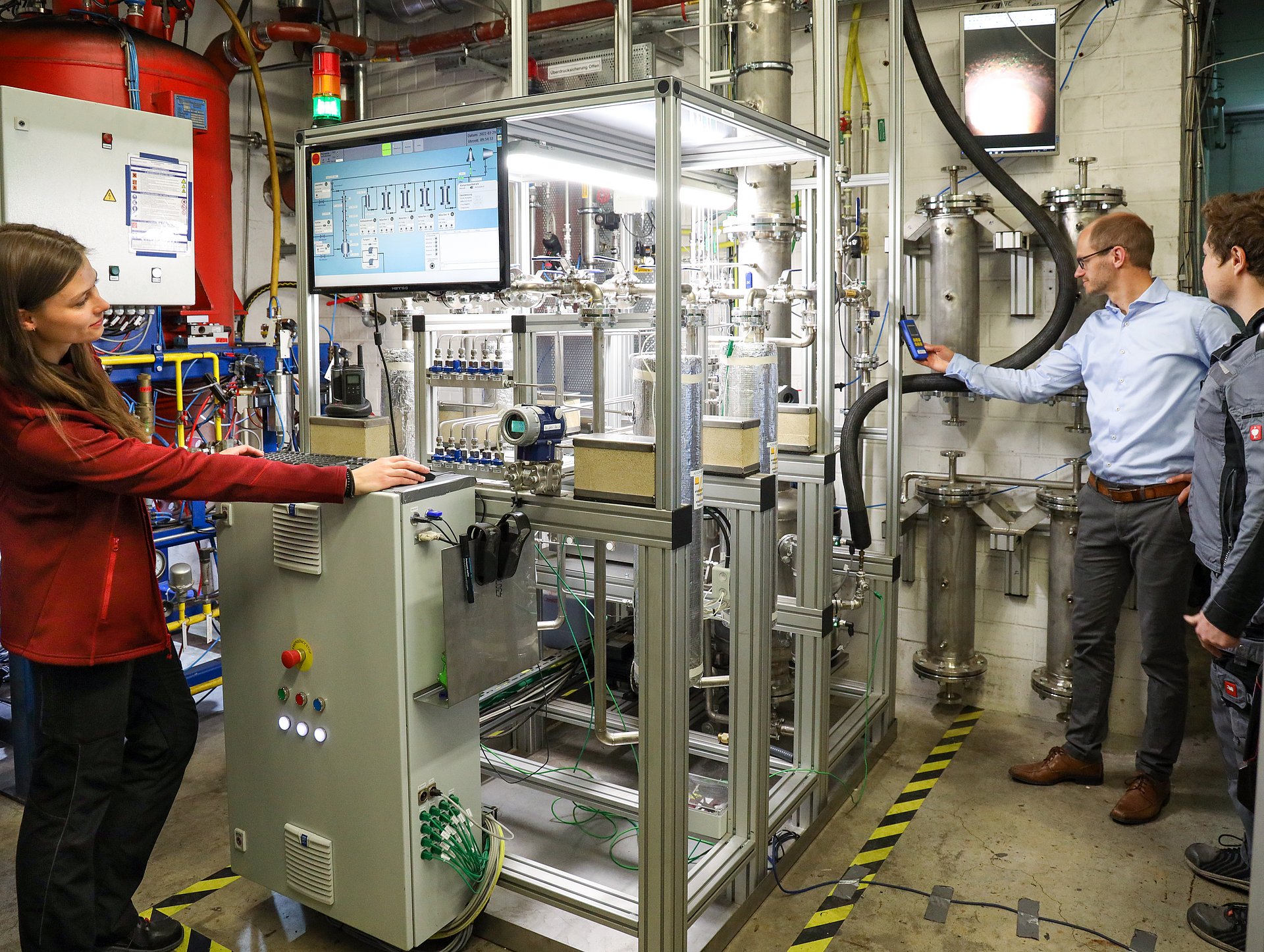Southeastern Bavaria's 'Chemical Triangle' region will be the future home to research on the climate-neutral transformation of Germany's entire chemical industry. The main focus will be on the use of hydrogen as an energy source and as a raw material for important commodity chemicals. The German Federal Ministry of Education and Research (BMBF) is funding the "Alliance Project H2 Living Laboratory Burghausen" with approximately 39 million euros. Industry partners will provide an additional 12 million euros. The Technical University of Munich (TUM) will take over scientific leadership of the alliance.
 Tassilo Letzel / TUM
Tassilo Letzel / TUM Working to make sustainable, hydrogen-based chemistry possible, research activities at TUM are focusing on a holistic approach. While studies identify location-specific potentials and necessary infrastructure measures, the research concept itself revolves around a modular container format for equipment, which will make it possible to investigate a variety of process routes. Objectives include the production of "green" methanol from renewable electricity and the conversion of waste materials into valuable chemicals using a plasma-driven Waste-to-X method.
Prof. Gerhard Kramer, TUM Senior Vice President, said: "TUM is closely linked with the Burghausen region. In the transformation process, the partnership between academic research and the chemical industry can make the H2 Living Laboratory the nucleus of the overall German hydrogen economy." H2 Living Lab project director Prof. Hartmut Spliethoff of the TUM Professorship for Energy Systems is confident: "The project will make an important contribution to the energy transformation in the chemical industry." The funding agreement was officially presented to the project partners by Dr. Jens Brandenburg, Parliamentary State Secretary to the German Federal Minister of Education and Research, at a gala ceremony in the TUM Science and Study Center Raitenhaslach, near Burghausen.
As a "Lighthouse Project", the H2 Living Laboratory, an initiative of the city of Burghausen, is to provide research results for the transformation of the entire German chemical industry, with the objective of paving the way to a climate-neutral hydrogen economy. A total of 36 project partners from science and industry are participating in the project, with TUM receiving 17 million euros in research funding. The Chemical Triangle Bavaria in the southeast of the state is the largest chemical industry region in Bavaria with 19 globally active companies, 20,000 employees and more than 10 billion euros in revenue annually.






